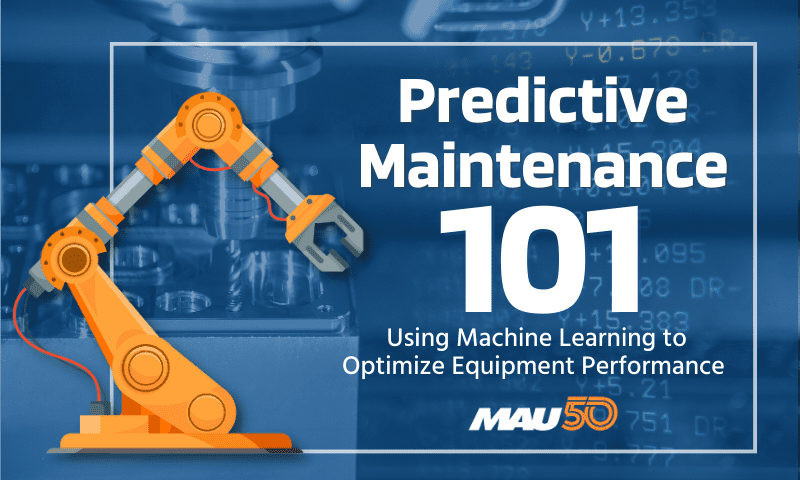In the current technological era, predictive maintenance is quickly becoming a must-have technology for many companies. Predictive maintenance uses data analytics to analyze equipment performance and identify potential errors before they can cause trouble down the line.
The goal of this process is to optimize machine efficiency and prevent downtime – which can lead directly to saving money on repairs, labor costs, and more.
In this blog post, we’ll explore what predictive maintenance is (and how it works), why it should be integrated into your work processes now rather than later, and how you can implement predictive maintenance in your business today.
What is Predictive Maintenance, and How Does it Work?
In the modern age of manufacturing, keeping up with equipment maintenance can be a challenge. To overcome this issue, many companies are turning to predictive maintenance in the hopes of prolonging the life of their equipment.
As the name suggests, predictive maintenance is a technique that predicts equipment failures before they occur. But what makes it so important? Imagine a manufacturing plant where machines are used round the clock to produce goods. A sudden breakdown of even one machine can bring the production line to a halt, causing huge losses to the company.
This is where predictive maintenance comes in – it helps prevent these unplanned equipment failures. A study by Deloitte reports that predictive maintenance reduces breakdowns by 70%, increases productivity by 25%, and lowers maintenance costs by 25%.
Utilizing the vast amounts of data available through data analytics, it’s possible to identify trends and patterns affecting equipment performance. By analyzing real-time data from sensors and using machine learning algorithms, it is possible to predict when machines might fail so that maintenance can be scheduled at a convenient time rather than waiting for a breakdown to happen. Not only does this save time and money, but it also extends the lifespan of equipment, resulting in increased productivity and profitability.
Machine Learning in Action
The world of machine learning is rapidly advancing, and there is no doubt that it has revolutionized how we interact with technology. One of the most fascinating applications of machine learning is the ability to harness big data to make accurate predictions and enhance equipment performance.
By analyzing data that has been collected over time, machine learning algorithms can identify patterns, trends, and correlations that can help predict future events, optimize processes, and improve overall performance. With its ability to continuously learn and adapt based on new data, machine learning is sure to transform how we approach problem-solving in countless industries and pave the way for innovation and growth in the years to come.
Machine learning can be integrated into predictive maintenance in a variety of ways. Let’s explore a few real-world examples:
- Anomaly Detection: By applying machine learning techniques like clustering, it’s possible to detect abnormal behavior in equipment. Machine learning algorithms can learn the normal operating conditions of a machine and then alert operators when data points deviate from this ‘normal’ pattern, indicating a potential issue that may lead to failure.
- Regression Analysis: Machine learning can be used to estimate a continuously changing variable, like the remaining useful life (RUL) of equipment. Using data such as operational conditions or previous failure history, algorithms can predict when a machine might fail in the future, allowing maintenance to be scheduled accordingly.
- Classification Models: These models can predict whether a machine will fail within a given timeframe. By using historical data about the machine’s performance and previous breakdowns, these models can classify if the equipment is likely to fail in the upcoming days.
These examples illustrate the power of machine learning in predictive maintenance. By harnessing the power of data and machine learning algorithms, businesses can predict and prevent equipment failures, ultimately increasing efficiency, reducing costs, and extending the lifespan of their equipment.
Getting Started with Predictive Maintenance
Predictive maintenance is a crucial strategy that enables businesses to detect equipment issues before they occur, minimizing costly downtime and maximizing operational efficiency. However, implementing a successful program can be a daunting task, especially for businesses with limited resources or a lack of experience. Luckily, there are several key steps that companies can take to get started.
To successfully set up a predictive maintenance program, there are a few key steps you should keep in mind. First and foremost, it’s crucial to pick the right technology and data sources that match your business needs. This ensures that the insights you gather are not only accurate but also relevant.
In addition to choosing the right tech and data sources, building a team with the right skills and expertise is equally important. Having a diverse team that brings different perspectives and knowledge to the table can make a big difference in how effectively you implement the program. You’ll want folks who know their way around data analysis, machine learning, and maintenance operations, among other things.
Furthermore, it’s essential to regularly evaluate and update the program based on performance data. This means analyzing the data you collect, spotting patterns, and adjusting your predictive maintenance strategies accordingly. By keeping a close eye on the program and optimizing it as you go, you can ensure it stays effective and aligned with your evolving needs.
By following these essential steps, any business can successfully put a predictive maintenance program in place and reap the many benefits it offers.
Implementing predictive maintenance can enable many benefits, from boosting efficiency to reducing costs. For anyone interested in getting started with predictive maintenance, it’s important to understand the basics and assess existing equipment data trends. Leveraging machine learning and big data can help make predictions and enhance performance.
While there are some challenges inherent with any new venture, the long-term benefits of predictive maintenance are too great to ignore – so don’t wait any longer: take action today to make sure your organization is investing in its future by implementing a successful predictive maintenance program.





